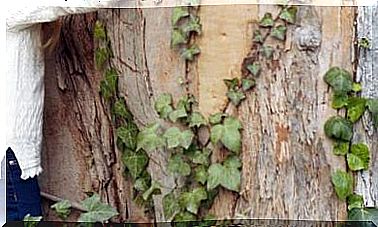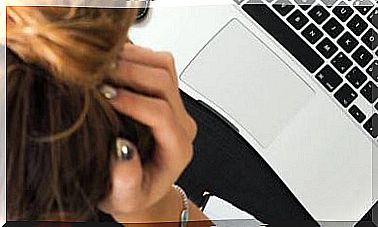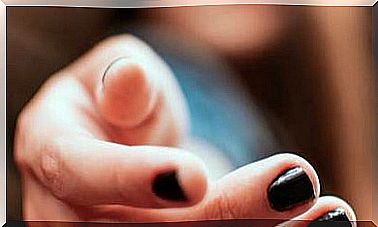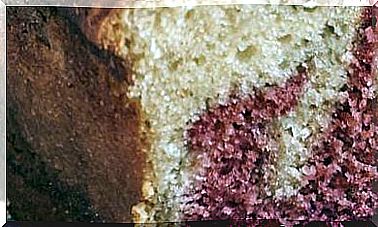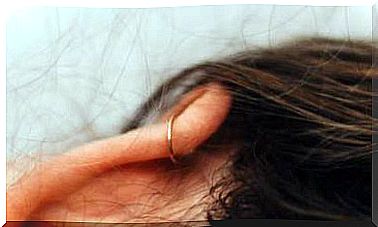Nail Symptoms And Their Natural Remedies
Nail conditions can cause pain, discomfort, and embarrassment. They can also indicate underlying problems. We explain how to treat the most common conditions with natural remedies.

- Symptoms that can be seen on the nails
- Nail stains
- Nail fungus
- Ingrown toenail
We do not think about the health of the nails until a problem affects them. Then we may not stop worrying about them. The causes of nail diseases can be underlying diseases or improper diet and care. As a consequence, they can be victims of fungi or they can become discolored, deformed, have a groove or become brittle.
The nails currently serve little more than a decorative function, but they are a remnant of times gone by in evolution when they served as self-defense, to protect the fingers or as tools.
The most interesting thing is that nails can reveal a lot the state of health of a person. Changes in your appearance can be inconsequential, but they can also be symptoms of many diseases.
Symptoms that can be seen on the nails
The healthy nails are firm, slightly concave, flexible and uniform. Diseased nails, on the other hand, grow slowly, may have an abnormal surface, shape, color and spots, and tend to crack or break.
Nail stains
Many people, including children and young people, have white, moon-shaped spots on their nails (there is a technical term for them: leukonychia punctata).
It is often said that they are due to a lack of calcium, an argument that serves for the child to have a glass of milk or yogurt, but in reality this is not the case.
The white withers are due to the fact that when we give small blows to our fingers, small “breaks” are produced that are repaired with keratin. A somewhat poor diet is likely to lead to nail breakage, but the nutrients involved are not known. Zinc deficiency is a possibility, but the person’s diet should be reviewed to verify that it is lacking or surplus.
Therefore, the white spots ask us to be more careful with our hands and to review the quality of our diet.
If the spots are larger, milky or yellowish, it is advisable to consult your doctor because it could be a symptom of liver or kidney disease.
Unevenly spotted, white nails often occur in psoriasis or from contact with chemical agents (eg, nitric acid)
Other stains on the nails can have different colors:
- Bright red: If the nails are strongly colored red it may be due to a dilation of the blood vessels in the nail bed and a sign of high blood pressure. Red spots under the nail plate are common in people with psoriasis.
- Bluish: Bluish nails indicate circulatory disorders, while strongly blue nails could indicate chronic heart or lung disease.
- Black: A gray-black color indicates metal or drug poisoning. It should not be ignored that the nails can also turn blue or black due to bruises.
- Yellow: Light yellow nails can be caused by the application of cosmetic polishes without a protective base. They can also be a sign of biliary and liver diseases (for example, jaundice). Some medications can also turn them yellow, such as tetracyclines (antibiotics).
- Yellowish brown: It can be a sign of nail fungus, which leads to the most common and well-known nail disease.
Nail fungus
In Europe, more than 10 percent of people suffer from fungal nail diseases (onychomycosis). About 90 percent of fungal nail infections affect the feet. Fortunately, only 10 percent of affected nails are those on the hands.
The reason fungus affects fingernails the most is that they grow twice as fast as toenails. The slower the nail grows, the more susceptible it is to fungus. Therefore, older people, whose nails grow more slowly, are at greater risk of suffering them. 50 percent of people over 60 are affected.
Nail fungus is mainly caused by fungi that feed on the keratin in the nails. They are especially comfortable in a warm and humid environment, which is why the sauna, swimming pool, showers and public changing rooms are their preferred “hunting grounds”.
The risk factors to suffer nail fungus include:
- Artificial nails
- Small skin lesions
- Diseases (eg, athlete’s foot, diabetes mellitus, psoriasis, circulatory disorders)
- Unbalanced diet (for example, vitamin deficiency, obesity)
- Medications (for example, antibiotics that reduce health-promoting bacteria and therefore weaken the immune system. The estrogens in the birth control pill also promote yeast infections).
If at most half a nail is affected, local therapy is usually sufficient and natural medicine can be effective. Preferred remedies for nail fungus, whether on the fingernails or toenails, include:
- Tea tree essential oil
- Lavender essential oil
- Apple vinager.
- Organic coconut oil (the lauric acid and caprylic acid it contains kills them)
App
A mixture of lavender oil and tea tree oil in equal parts is recommended. Dip a cotton ball or ear stick into the oil mixture and spread it generously over the infected nail. Repeat the application three to four times a day for a week. The improvement has to begin to be noticed from the third day.
Ingrown toenail
The ingrown toenail or toenail occurs when the sides of the toenail dig into the surrounding skin, causing inflammation.
The big toe is usually the most affected and the possible causes are the wrong cutting of the nails, too tight shoes or increased sweating on the feet.
Nail bed inflammation can become infected when bacteria invade irritated skin tissue, making discomfort worse. Typical symptoms are:
- Sensitivity
- Hot, red, and inflamed spots
- Swelling
- Excess skin
- Bleeding
- White or yellow pus
Home remedies
- Wash the area with a mild soap or Epsom salt to soften it and separate the skin from the nail.
- You can also add a cup of apple cider vinegar to some warm water and soak your nail in it. This disinfects it and kills possible germs.
- After you’ve soaked it in, use dental floss (not menthol) to gently lift the corner of the nail that has gone under the skin.
How to cut the ingrown toenail
You also have the option of trimming an ingrown toenail. However, it is somewhat complicated. The best way to do it is:
- Soak your foot in warm soapy water for 20 minutes. This will reduce swelling and soften the skin.
- Sanitize your hands and remove the skin just enough (it can be painful) to be able to cut the nail in a straight line, starting at the end.
- Finally, place a small piece of cotton between the toenail and the skin. This serves to put the nail back on the right track.
If this “operation” causes you respect, you can go to a podiatrist.
To avoid the appearance of an ingrown toenail:
- Wash your feet regularly with soap and water.
- Change your socks regularly
- Don’t cut your toenails too short or oval
- Gently push back overlapping cuticles
- Wear comfortable shoes and walk barefoot as much as possible


